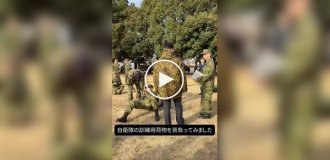Interesting fact: Indian moms are earlier than European women came up with a way to free their hands, but at the same time remain with baby nearby. 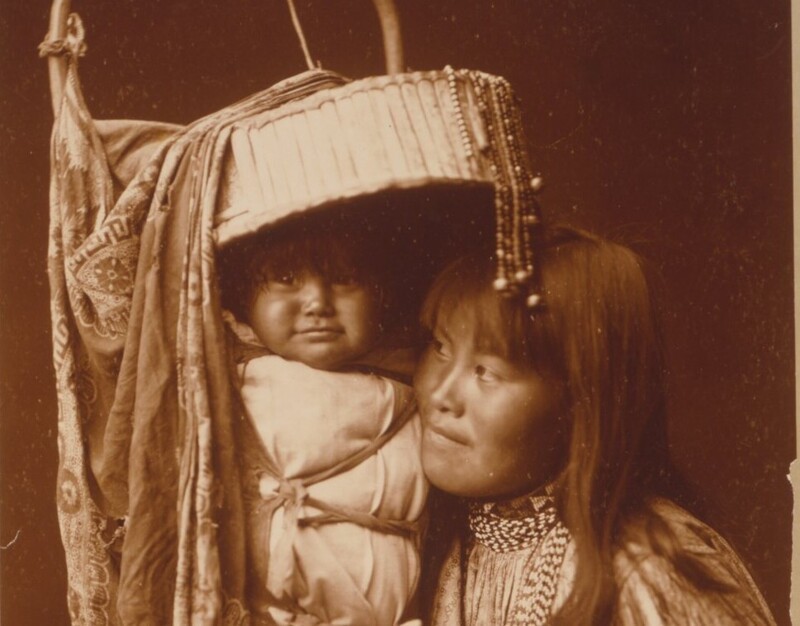
By the way, important information for those who have not watched publication, has already gone to write in the comments that Indian women do not live in America, but in India. In fact, according to the rules of the Russian language, Indian women do not even exist. The feminitive from the nouns "Indian" and "Indian", the same. And that word is Indian. Dot. 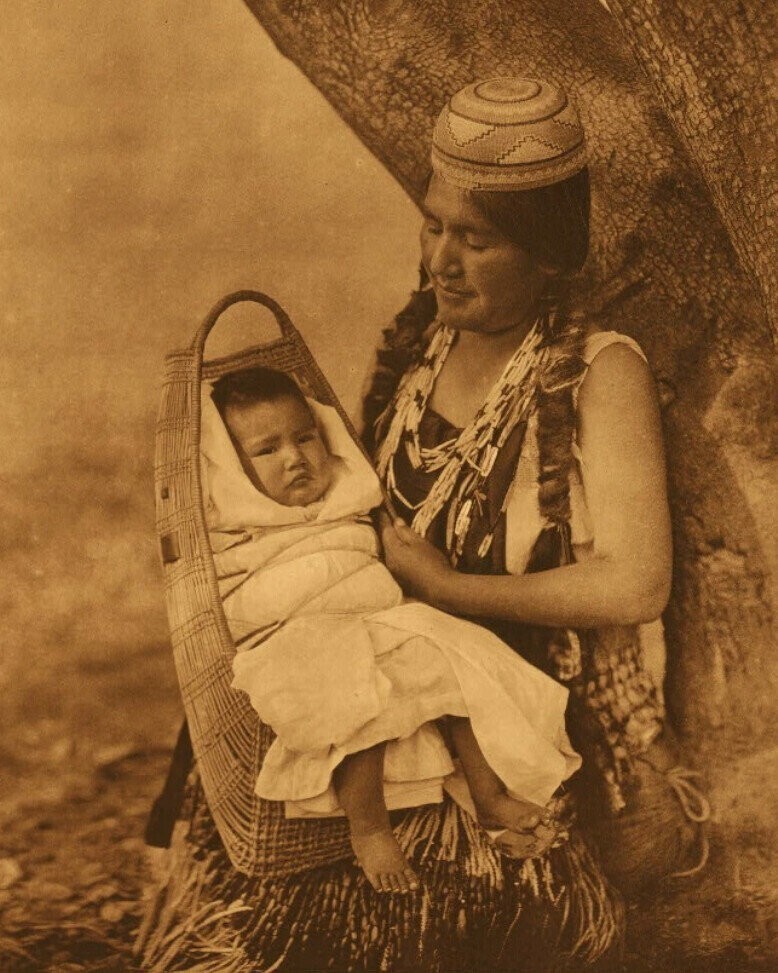
Well, let's get back to the topic at hand. That is, to baby cradles. Depending on the climate and habitat, each the Indian tribe had their own "modifications" of such cradles. On the Pacific coast, as a rule, they were woven from twigs, as in the previous photo. A in the picture below, the cradle is made from a piece of leather with lacing. 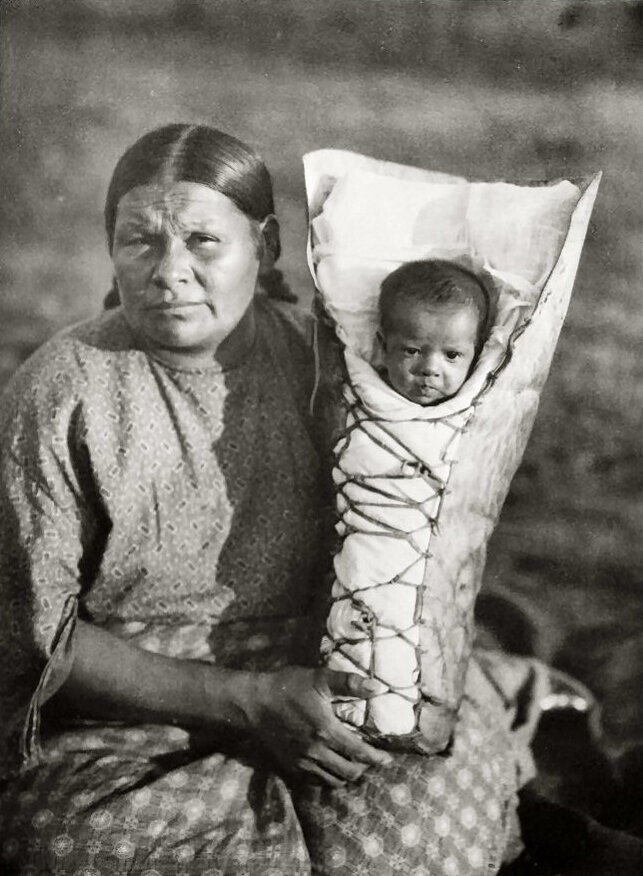
Almost all Indian tribes in the manufacture of such cradles special attention was paid to protecting the baby's head with the help of special structures. Thus, when moving through the forest, injuries were excluded. baby's face and head. 
Indian cradles, as a rule, had a rigid frame, thanks to which they could be removed from the back and placed, for example, under a tree in the shade or to a dwelling. 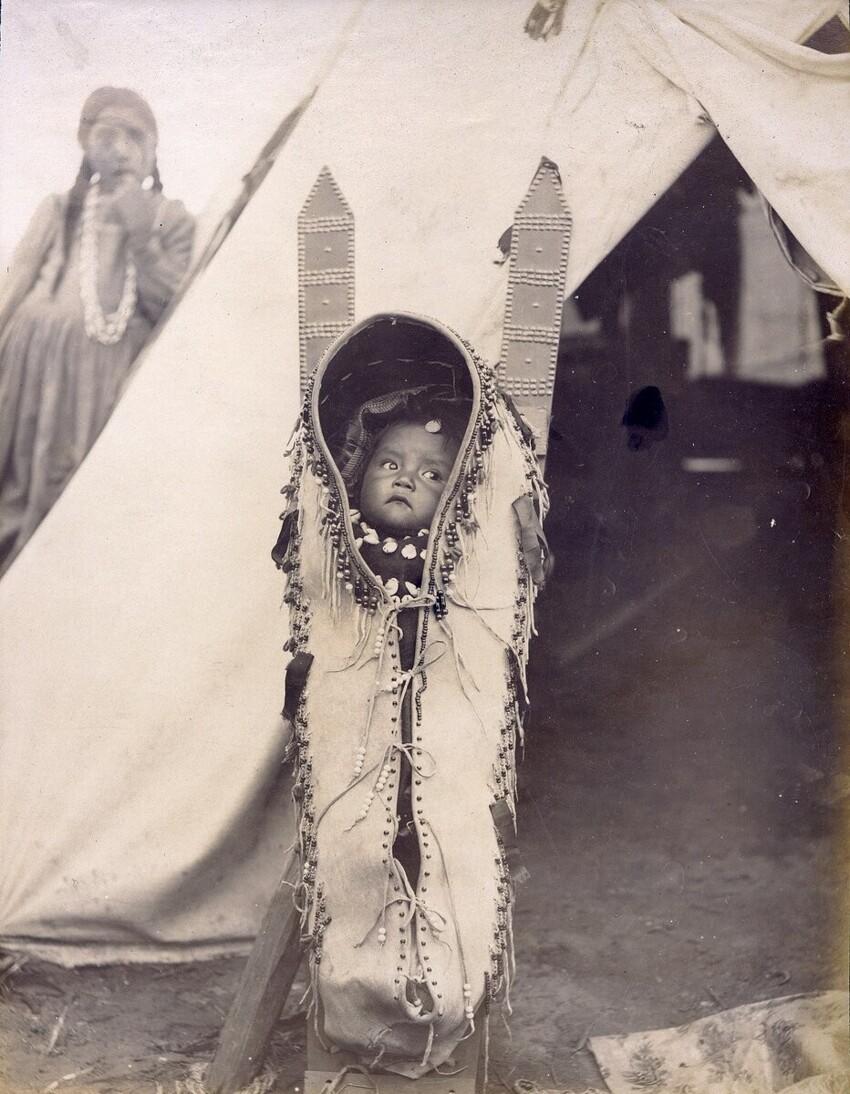
Particular attention to individual tribes of American Indians devoted to decorating their cradles. Let and primitive, but still. 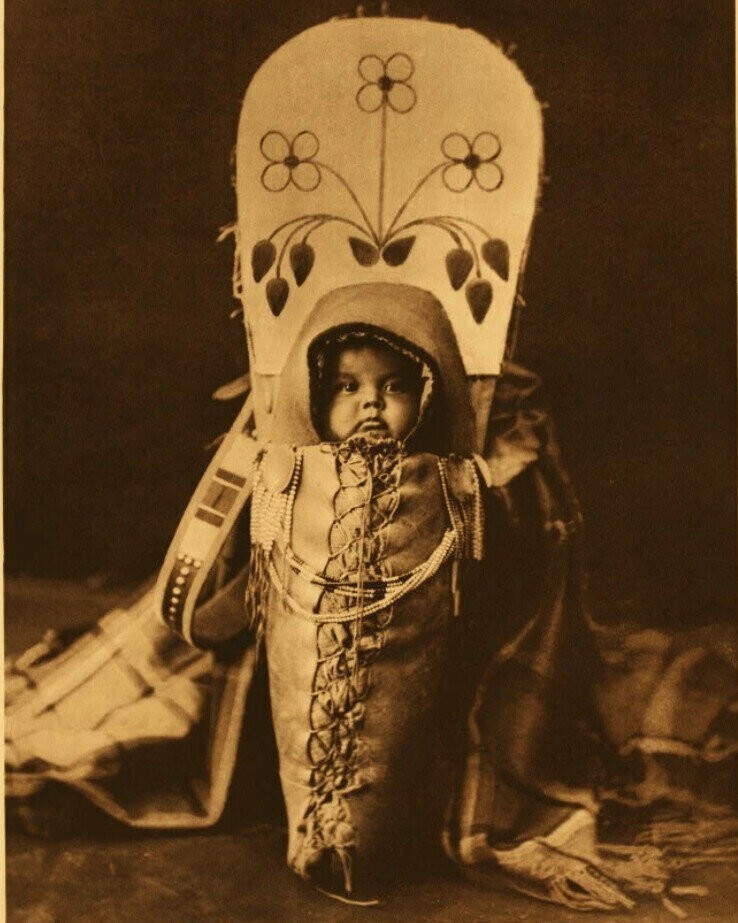
Inside the cradles, Indian women lined moss, leaves, crushed juniper bark. This is the original diaper. 
In regions with a warmer climate (Mexico and south), rigid frame cradles were no longer so ubiquitous. However the child still "rides" on his mother. It was worn on the waist, where he partly sat astride, partly clung to or lay on a swing like a hammock. 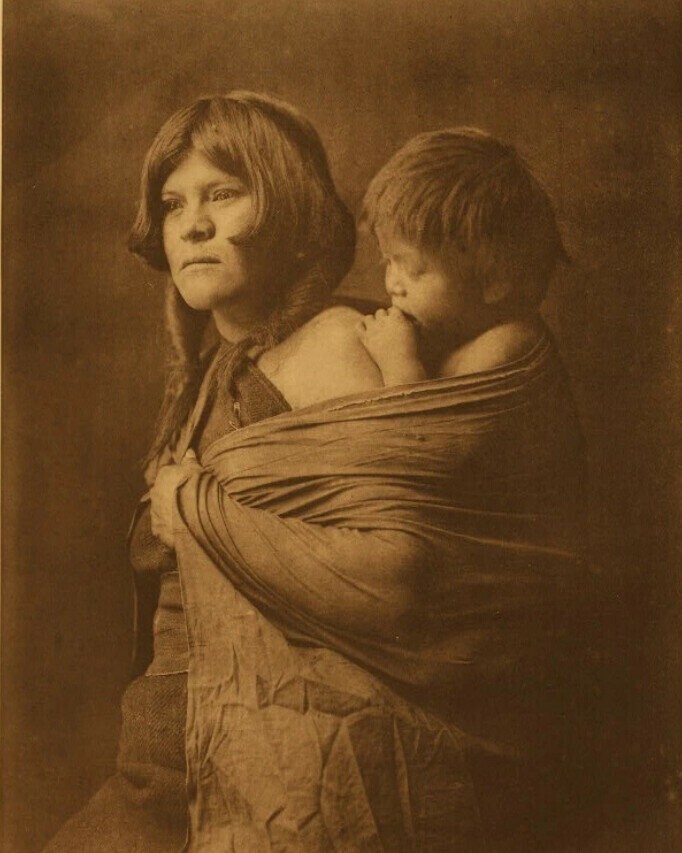
One more example. Tired baby =) 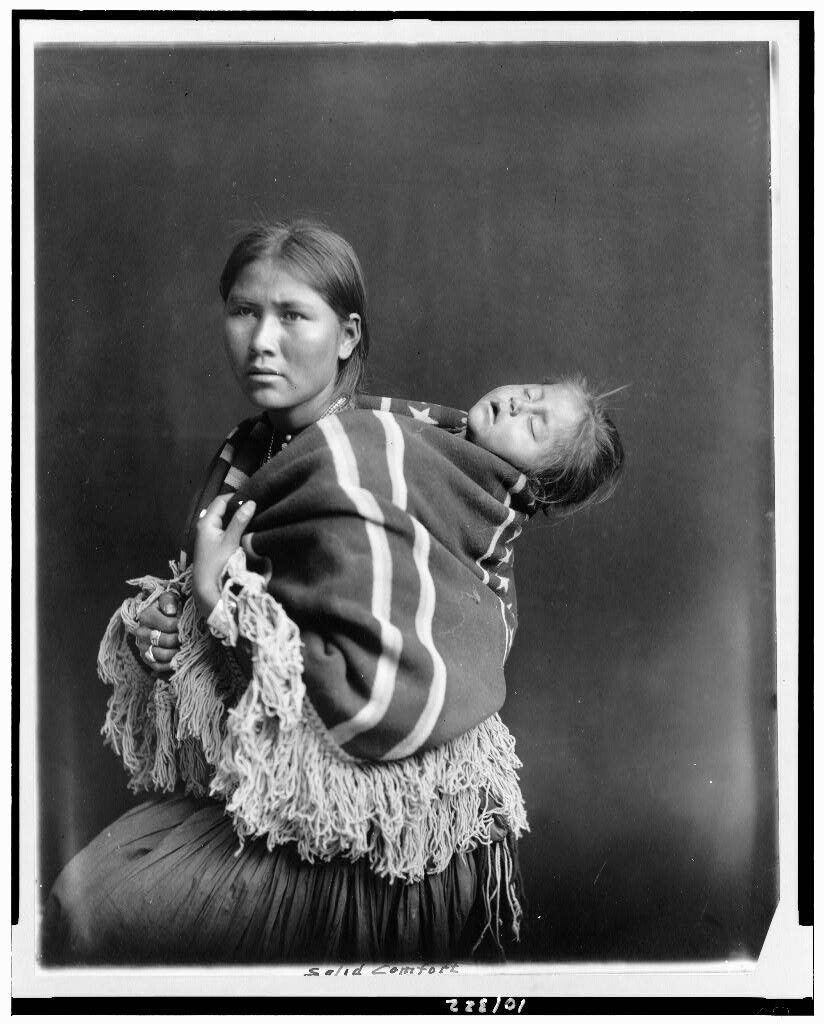
In general, it should be noted that the life of Native Americans well documented in photographs. Certainly a larger some of the photos were taken in a photo studio, and not in their natural habitat, but what is, is. And one of the most "prolific" photographers of the Wild West was Edward Curtis, whose pictures in this collection, as you already noticed, it turned out the most. 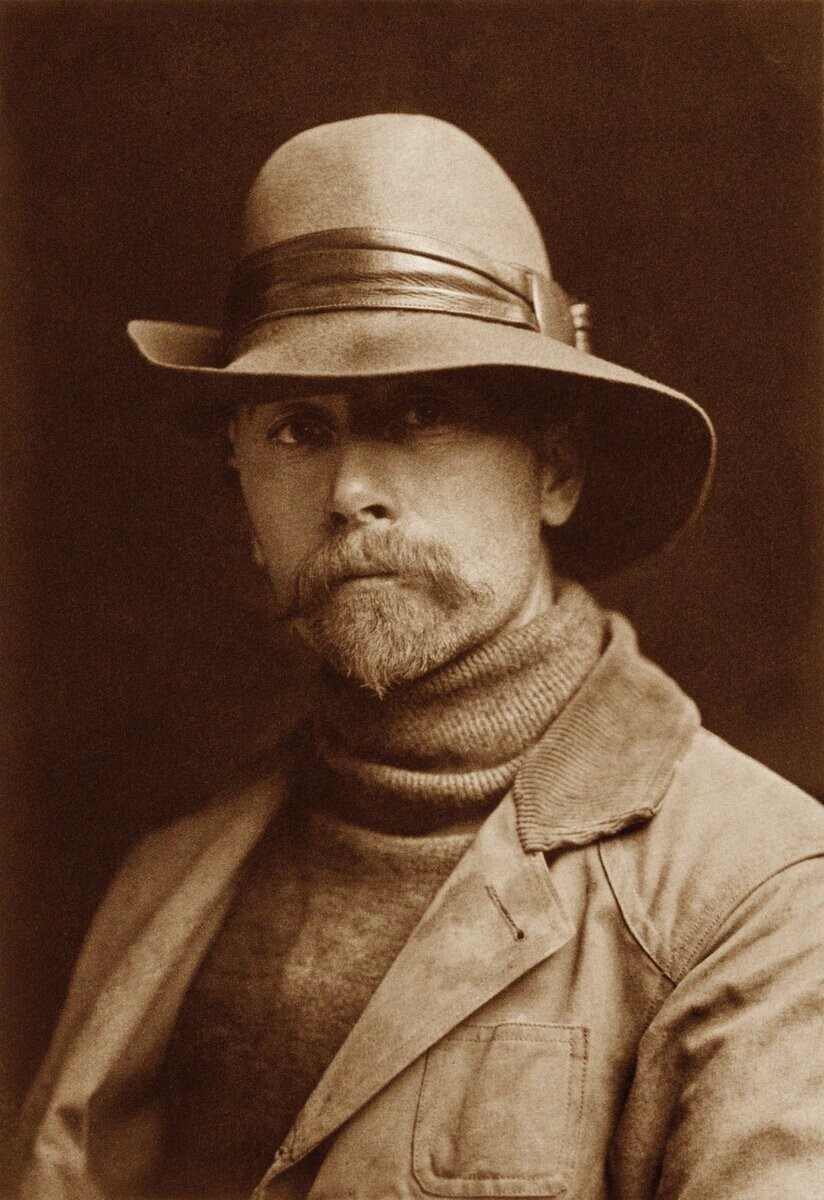
Edward Sheriff Curtis himself. Self portrait, 1889
And this is no wonder. This man took over 40,000 photographs in more than 80 Indian tribes.
In addition to photographs, he recorded samples of Indian speech and music on wax cylinders, collected local legends, beliefs, recipes and etc. In many cases, his writings are now the only written source on the history of many Indian tribes.
Add your comment
You might be interested in:
